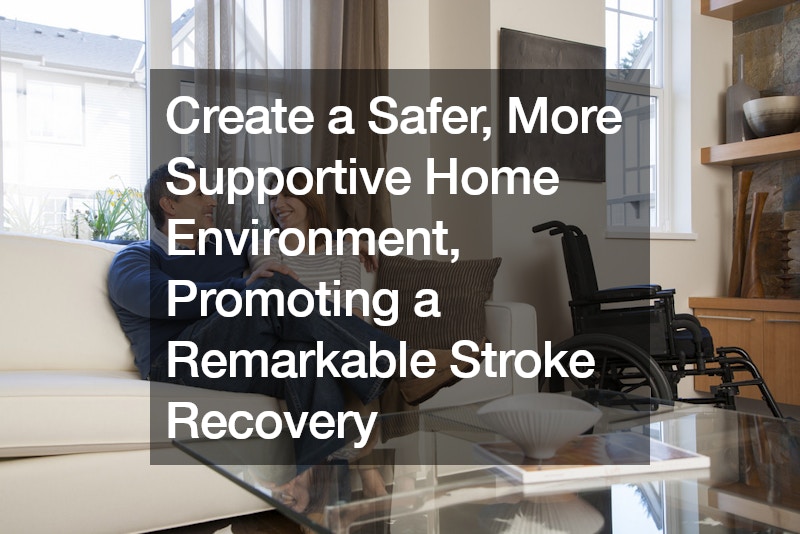A stroke is a life-changing event that brings both physical and emotional challenges. Everyday tasks may become more difficult and often need to be relearned. To support stroke recovery and ensure effective home health care, it’s important to make home environments as safe as possible. Here are essential home improvement and safety tips to ensure a smoother recovery.
1. Conduct a Home Safety Evaluation
Begin by assessing the safety of your home. A professional, such as a social worker, can help review your needs and suggest necessary home modifications. This evaluation will help identify specific changes to enhance safety and mobility.
2. Clear and Safe Pathways
Ensure that the paths to critical areas like the kitchen, bedroom, and bathroom are clear of obstacles. Remove clutter and keep items like phones and electrical cords out of the way. Rearrange furniture to create wide, accessible pathways that allow for easy movement.
3. Eliminate Tripping Hazards
Falls are a significant risk for stroke survivors, with about 40% experiencing a serious fall within a year. To prevent this, clean up spills immediately and remove all throw rugs. Secure larger rugs with double-sided tape and replace any worn or torn surfaces to reduce the risk of tripping.
4. Install Supportive Features
Adding grab bars or handrails to walls can provide essential support for standing and walking. In the bathroom, use handrails in the bath or shower and consider a shower chair for added safety. Nightlights in the bedroom, bathroom, and hallways can improve visibility and reduce fall risks at night.
5. Utilize Assistive Devices
If you feel unsteady, assistive devices like canes, walkers, or ankle braces can be incredibly helpful. Specialized technology to improve arm and leg function, as well as wheelchairs, can also enhance mobility and independence.
6. Prevent Further Falls
Stay active to keep your muscles strong, as exercise is crucial for recovery. Wear comfortable, flat shoes with a low heel and a gripping sole. Avoid loose slippers and walking in socks, as these can increase the risk of slipping. Always use handrails or your walking device for stability rather than relying on furniture or walls.
7. Easy Access to Everyday Items
Store frequently used items at waist level to avoid the need for climbing or stretching. Consider purchasing a reacher or grabber, a handheld tool designed to help you get things that are out of reach safely.
8. Follow Professional Advice
Always follow your therapist’s safety recommendations and regularly review your medications with your doctor. Taking control of your recovery involves being patient with yourself and allowing time for rest breaks.
By making these changes, you can create a safer, more supportive home environment, promoting a remarkable stroke recovery.
.












